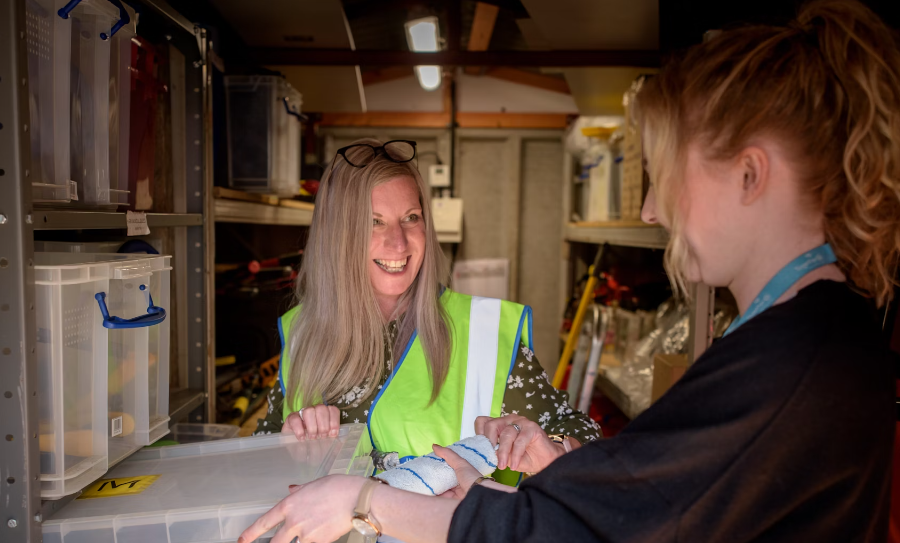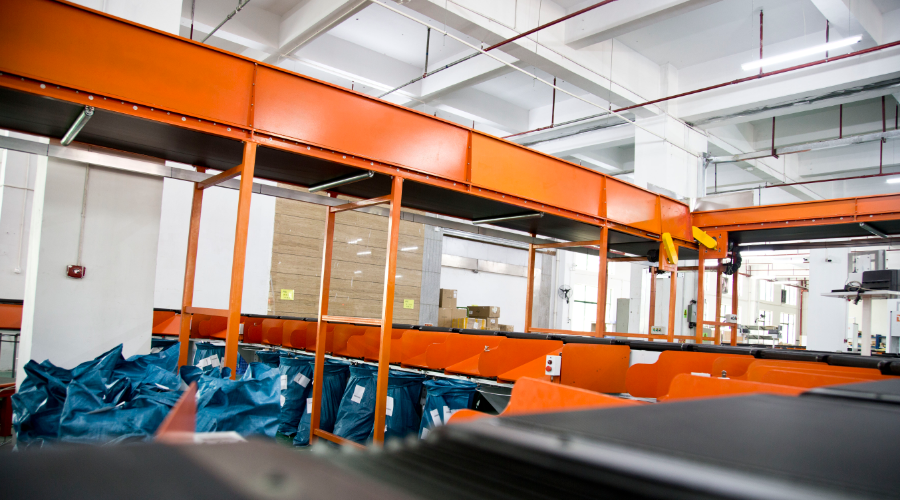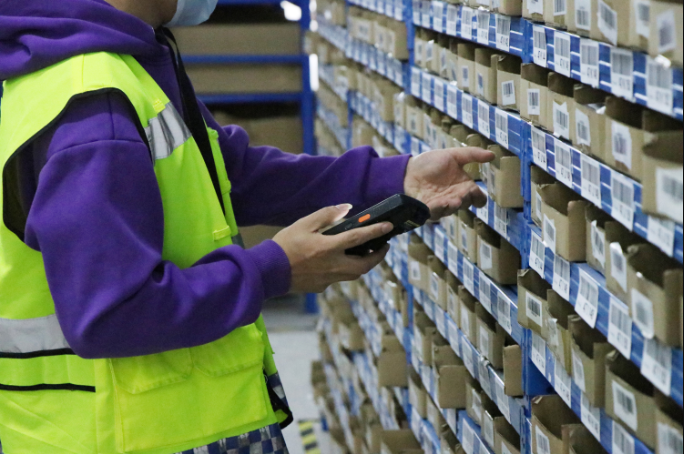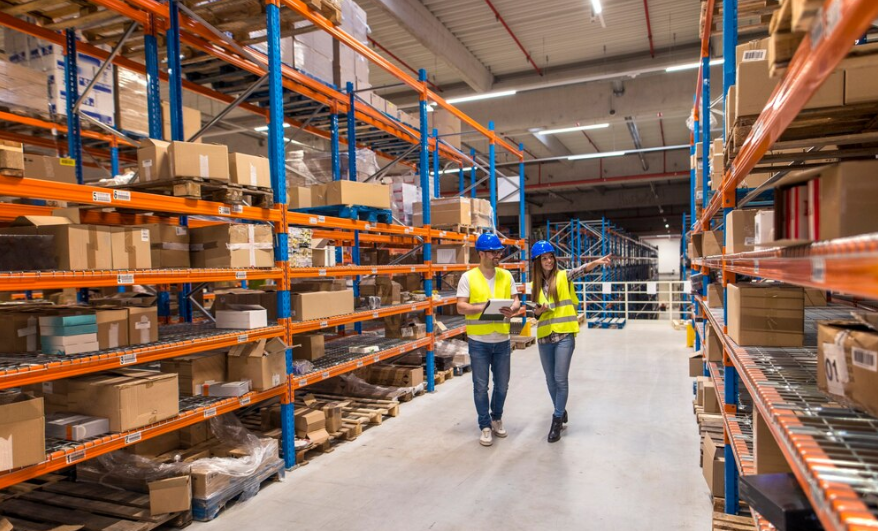In the world of commerce today, growth is both opportunity and risk. For ambitious brands, scaling fast doesn’t simply mean selling more—it means managing more: more products, more orders, more channels, more geography, and exponentially more complexity. As a brand based in China with global ambitions, such as yours at SendFromChina, knowing how to navigate fulfilment—not just as a back-office operation but as a growth accelerator—is what separates thriving brands from struggling ones.
In this article we’ll explore the concept of the Fulfillment Accelerator, why this model is emerging as a vital tool for rapidly-growing brands, how to recognise when you need it, and how you can implement one (or partner for one) to scale seamlessly. Along the way I’ll draw on industry data, case studies, and actionable steps. While you’ll see some familiar logistics concepts, the real value is in thinking of fulfilment strategically rather than operationally.
1. What is the “Fulfillment Accelerator”?
The term “Fulfillment Accelerator” is relatively new in the logistics lexicon. It describes a fulfilment-model designed for brands that are scaling rapidly—not just managing day-to-day orders, but building infrastructure, processes and technology that allow order volume, geography, and channel mix to multiply without the company’s operational cost growing at the same rate.
A recent piece by RMW Commerce and ShipBob defines it as “a new category of
order fulfillment solutions that offer scale, expertise, flexibility in technology adoption and facility ownership, and global, omnichannel, and customisation capabilities, allowing growing brands to choose their own path.”
In simpler terms: instead of thinking of fulfilment merely as “we pack and ship orders for today”, the brand steps into a mindset where fulfilment becomes a strategic lever: faster time-to-market, better delivery economics, improved customer experience, and a foundation for new markets. It’s about accelerating fulfilment capability in alignment with the brand’s growth curve.
Key hallmarks of a fulfilment accelerator model include:
Unified visibility of inventory across channels and geographies.
Access to logistics/transportation rates and infrastructure that mid-sized brands normally can’t command alone.
Flexibility in how fulfillment is carried out (in-house, outsourced, hybrid) while using consistent technology/process frameworks.
Ability to support omnichannel mix: DTC (direct to consumer), marketplaces, wholesale/retail,
international shipping.
Rapid implementation and low upfront risk, so brands don’t get stuck in long, costly setups.
Why is this so important? Because many growing brands hit a logistic “ceiling” as they scale. They may have grown well in their early phase using
in-house fulfillment or a standard
3PL, but as order volumes increase, markets diversify, customer expectations rise, they reach a point where fulfilment becomes a bottleneck rather than an enabler. That’s where the concept of the fulfilment accelerator comes in—as the tool to move past the bottleneck and enable growth rather than hinder it.
2. Why Fast-Growing Brands Need a Fulfillment Accelerator
Let’s look at the forces pushing brands toward this model, and the data that illustrate how serious the issue is.
Consumer Expectations Are Rising Fast
Today’s shoppers expect more: faster delivery, easy returns, transparency in tracking. According to recent research:
46 % of buyers list faster delivery as a core expectation.
43 % say they expect Amazon-like transparency in the supply chain.
In environments where delivery fails, brands lose because late fulfilment directly impacts loyalty and repeat business.
These aren’t just nice-to-haves—they are baseline expectations. A brand that cannot deliver on speed, visibility and reliability loses competitive advantage rapidly.
Complexity Grows Non-Linearly with Scale
When a brand handles 50 orders a day, in-house fulfilment or a simple 3PL partner can manage. But when you scale to thousands of orders across multiple
SKUs, multiple markets, domestic and cross-border, that complexity increases dramatically.
For example, one study of a major Chinese e-commerce player showed that by optimizing assortment planning and inventory allocation across regional distribution centres and front-distribution centres, fulfilment efficiency improved materially.
Meanwhile research shows that brands outgrowing initial markets find many logistics firms simply aren’t equipped to support next-level scale—“brands that try to outgrow their initial market are hamstrung by a dearth of logistics firms that can help them navigate the transition into a bigger player.”
Cost Pressures and Margins Squeeze
Growth often hides operational inefficiencies until they become painful. One of the biggest cost levers in fulfilment is labour, space,
inventory carrying cost,
shipping rates and returns. If your fulfilment model grows in cost at nearly the same rate as orders, your margin will compress.
The fulfilment accelerator model aims to let brands scale order volume faster than cost, thus improving EBITA.
Geographic & Channel Expansion
Many growing brands have aspirations beyond their original market—entering new countries, branching into retail or wholesale, or balancing direct-to-consumer with marketplaces. That expansion takes fulfilment footprint, locale knowledge, customs/import/export expertise, and more.
One research piece noted that nearly 96 % of brands expect cross-border orders to rise in Q4 2025 vs. 2024. Yet only about 31 % of leaders were “extremely confident” in their ability to handle cross-border fulfilment. If fulfilment is only built for one market, scaling becomes excruciating.
3. How to Recognise You Need a Fulfillment Accelerator (and Not Just a Standard 3PL)
If you’re asking, “Is my brand ready for this?” here are some signs. If you see every one of these, then you’re likely at the critical juncture where partnering for or building a fulfilment accelerator makes sense.
Key Indicators
You’re seeing rapid increase in order volume (for example, monthly orders growing by double-digits or you’re entering a next phase of growth) and your current fulfilment cost per unit is increasing rather than decreasing.
Your delivery promises are slipping—you’re seeing late shipments, returns increasing, customer complaints rising.
You lack real-time visibility of inventory across your warehouse(s), channels and geographies; this is causing
stockouts,
overstocking in certain locations, or redundant safety stock.
You’re paying higher shipping/transportation cost per order than comparable brands (because you lack scale, carrier contracts, or network optimisation).
You have multiple channels (DTC, marketplace, wholesale) and possibly international customers, but your fulfilment partner or system was originally designed for one channel only.
You’re approaching peak seasons or promotions where you’ll see volume spikes, and you lack the flexibility to absorb that spike without big cost or service compromises.
Your internal fulfilment team is distracted—managing operations is taking time away from strategic initiatives like product, marketing, growth.
According to an article on
outsourcing fulfillment, one telling benchmark is when a brand still doing in-house fulfilment is processing perhaps ~50-100 orders/day but growth is pushing beyond that. At that point manual processes become unsustainable.
If you check multiple of those boxes, then the logic for a fulfilment accelerator is compelling: you’re no longer just asking for fulfilment service—you’re asking for fulfilment infrastructure and capability that scales, flexes and enables growth.
4. The Anatomy of a Fulfillment Accelerator: What It Looks Like In Practice
So what does a fulfilment accelerator actually comprise? Here are the components (and how they differ from a standard fulfilment/3PL model).
Technology & Data Platform
Unified visibility across inventory (owned/outsourced), orders, picking/packing/ship operations, returns and in-transit logistics. (See research on logistics strategy driving revenue.)
Real-time dashboards, alerts and KPIs that scale with complexity.
Ability to plug in new channels, carriers, geographies without rewriting large IT systems.
Analytics to optimise slotting, picking flows, shipping routes, regional allocation and demand forecasting. For example, research into omnichannel multi-courier fulfilment shows that contextual optimisation yields significant improvements in delivery-time compliance.
Flexible Network & Facilities
Rather than a fixed warehouse or contract, a fulfilment accelerator supports:
Multi-facility, multi-region operations—so a brand can position inventory physically closer to demand, reducing last-mile cost and time. For example research on micro-fulfilment shows how moving inventory closer to customers (and automating) drives speed and lower cost.
Hybrid fulfilment: brand may use its own facility for some operations, and outsource for others—while using the same process/technology backbone. As ShipBob/RMW note: “Providers in the Fulfilment Accelerator category can be a good match for companies … software and process expertise can be applied to a brand’s existing facility and labour investments, without adopting other solution elements.”
Carrier and shipping rate leverage: A fulfilment accelerator gives access to better shipping/parcel rates by aggregation (or network leverage) that a mid-sized brand alone could not negotiate.
Channel & Market Readiness
The model supports multiple channels and geographies with minimal friction:
Ability to fulfill DTC orders, marketplace orders, wholesale/retail replenishment.
International fulfilment readiness: duty/tariff knowledge, regional distribution centres, local compliance.
Packaging, customisation, marketing inserts and branded experience as standard—not add-ons.
Scalable Operating Model
The operational design of a fulfilment accelerator allows you to scale without linear cost increases:
Standardised processes across facilities/channels, meaning onboarding new markets is faster and smoother (lower risk).
Labour, space and technology productivity metrics that hold up with volume upswing.
Onboarding timelines that are short (weeks rather than months) so you’re not losing momentum.
Dedicated account/prosupport teams that understand brand-growth dynamics (rather than purely transactional 3PL model).
Growth Master-Mindset
Perhaps the most important intangible: the mindset of fulfilment as a growth enabler—not just a cost centre. That means:
Fulfilment decisions are tied into growth strategy (new markets, channel expansion, new verticals)
Fulfilment metrics are tied to brand/profit metrics (e.g., order-to-delivery time, customer satisfaction, returns cost, inventory velocity)
Continuous improvement mentality: as a brand scales, the fulfilment accelerator evolves with you rather than being static.
5. How a China-based Brand Like SendFromChina Can Leverage the Fulfillment Accelerator Model
Since your brand is based in China and likely has global ambitions (or perhaps already selling cross-border), you have both unique advantages and unique challenges. Here’s how you can apply the fulfilment accelerator mindset specifically in your context.
Leverage China’s manufacturing & supply chain ecosystem
Being in China gives you proximity to manufacturing, sourcing and assembly. That’s a strong competitive advantage for fast-growing brands. To fully leverage this:
Integrate upstream sourcing information with
fulfillment planning. If factories in China know what needs to ship and when, you reduce lead-times.
Use China-based fulfilment centres (or near China) as one node in your network—so you’re fulfilling globally yet rooted in China’s supply chain strength.
Develop multi-modal shipping routes (air, sea, rail) from China to your target markets so you can adapt cost vs speed based on product/season.
Build or partner to create a regional network
If you’re selling internationally, you need fulfilment nodes in target regions. Options include:
Working with local 3PL/fulfilment-accelerator partners in key markets (e.g., North America, Europe, Southeast Asia) so you’re physically closer to customers and reduce shipping cost/time.
Design your inventory allocation strategy: For example, maintain central stock in China + regional buffer stocks in key hubs. Use demand forecasting to allocate inventory ahead of time.
Use your fulfilment technology backbone (or partner’s system) to unify inventory visibility across all nodes: China central + regional warehouses + in-transit inventory.
Ensure technology & process readiness
Ask yourself: do you have the right technology set to support growth? Consider:
Platform integration: your e-commerce front-end + marketplaces + back-end fulfilment system + shipping/carrier management + returns system.
Real-time visibility: dashboards showing orders, inventory by region, fulfilment centre performance, carrier performance, returns cost etc.
Analytics: using data to decide where to allocate inventory, when to move stock, identifying cost/unseen bottlenecks.
Flexibility: ability to plug in new
fulfillment centers, channels, regions without major upheaval.
Partner with the right fulfilment accelerator-type provider
Since you’re scaling, you may not want to build all capabilities in-house. Key criteria when choosing a partner (or building one) include:
A partner who has proven scale and experience with brands that have grown rapidly, not just those doing “steady state fulfilment”. The research warns that some “technology-only 4PLs” without real operations experience may fail brands.
A partner who offers both in-house and outsourced capability (or hybrid) so you can choose the best path for each market (and change as you grow).
Transparent cost / performance metrics—from onboarding to ongoing operations.
Ability to support custom fulfilment requirements (branded packaging, inserts, promotional bundles) not just standard pick/pack/ship.
Strong shipping/carrier relationships and global reach to support cross-border expansion.
Use fulfilment as a strategic lever—not just a cost item
Finally, your brand should use fulfilment decisions to support growth goals:
Use faster fulfilment, closer inventory nodes, better shipping visibility as differentiation in the market (i.e., better customer experience → stronger loyalty).
Shift from cost-only mindset to value-mindset: yes, fulfilment costs money, but if it enables higher customer retention, faster time-to-market, better brand reputation, it’s an investment.
Monitor metrics beyond cost — e.g., order lead-time, on-time delivery, average shipping cost per order by region, returns rate, inventory-turnover by region.
Build in flexibility to scale up/down: for example, during peak seasons you can leverage the network without building wholly new facilities yourself.
6. Common Pitfalls & How to Avoid Them
Even with the right mindset, scaling fulfilment falls apart when brands make avoidable mistakes. Here are some common pitfalls — and what to watch out for.
Pitfall 1: Waiting too long to change the model
Many brands push their existing fulfilment models too far, hoping that they’ll “just hold up” as volume increases. But once you reach the tipping point, you face higher costs, slower delivery, lower customer satisfaction, and the lost revenue may outweigh the cost of upgrading. One guide suggests outsourcing makes sense when you’re handling ~50–100 orders per day in-house and the growth curve signals much more.
Avoidance tip: Monitor your metrics closely (cost per order, lead-time, service level, customer complaints). When you see metrics degrading, treat it as trigger for change—not optional.
Pitfall 2: Underestimating the integration complexity
Many brands pick a fulfilment partner or expand facility without giving full weight to data, system and process integration. Without integration, you’ll face inefficient processes, manual workarounds, and slow onboarding.
Avoidance tip: As part of any fulfilment accelerator setup, prioritise system integration early: your e-commerce front-end,
order management system, inventory system, WMS, shipping/carrier system, and returns. Have a clear onboarding, testing and go-live timeline.
Pitfall 3: Using standard fulfilment when you need customisation
Not all orders are equal. Fast-growing brands often have branded packaging, variable SKUs and promotions, returns complexity—all of which standard 3PLs may treat as extra-cost or ignore. A fulfilment accelerator must support customisation at scale.
Avoidance tip: When choosing a partner, ask about their ability to support branded packaging, promo inserts, value-added services (e.g., kitting, bundling), multi-channel requirements, and variable volumes.
Pitfall 4: Focusing only on cost, ignoring performance
It’s tempting to choose the lowest cost fulfilment provider. But if you sacrifice service levels, speed, flexibility or future scalability, then the cost savings may be offset by lost sales or customers.
Avoidance tip: Build your fulfilment evaluation on multiple metrics: cost per order, lead time, on-time delivery %, inventory accuracy %, scalability, tech integration, and growth support. Consider cost and value.
Pitfall 5: Not planning for peaks and global expansion
Fulfilment is not static. You’ll likely face seasonal spikes, new markets, changing SKUs, returns surges, and supply-chain disruptions (e.g., tariff shifts, global shipping delays). If your fulfilment model is rigid, you’ll struggle.
7. How to Build a Roadmap for Your Brand
Here’s a suggested roadmap for a brand like SendFromChina to build or partner for a fulfilment accelerator model.
Step 1: Audit current fulfilment operations
Map current fulfilment pain-points: delivery speed, wrong shipments, costs, peak-season strain, geographic gaps, customer complaints.
Gather metrics: orders/day, cost per order, average shipping cost, lead time (order → ship), returns rate, inventory accuracy.
Forecast growth: where will you be in 6-12 months? New markets? Additional SKUs? More channels? Use that to identify capacity gaps.
Step 2: Define fulfilment strategy aligned to growth
Identify which markets/channels you will prioritise (e.g., DTC global, marketplace, retail/wholesale).
Identify geographic nodes: Will you ship globally from China only? Or set up regional fulfilment hubs (e.g., Europe, US, Southeast Asia)?
Define desired customer experience: e.g., 2-day delivery in major markets, branded packaging, easy returns.
Define technology and data visibility needs: What data do you need to manage fulfilment at scale? What systems must be integrated?
Step 3: Choose fulfilment partner model / build in-house capability
Decide whether to partner with an existing fulfilment accelerator-type service (or 3PL with growth mindset) or build internal capability (or hybrid).
Evaluate partners based on criteria above (technology, flexibility, global reach, customisation, cost, growth support).
If building in-house/hybrid: start small but design for scale. Choose a WMS/OMS that can handle multi-region, multi-channel. Ensure carrier contracts scale. Plan for flexible staff and modular facilities.
Step 4: Implement and onboard
Set up pilot region or channel first to validate processes, systems, cost.
Integrate systems: e-commerce front-end → order management → fulfilment system → shipping carriers → returns.
Set KPIs and dashboards: e.g., order-to-ship time, delivery time, cost per order, inventory accuracy, returns rate, customer satisfaction.
Train team and partner(s), run end-to-end testing, go live with clear launch plan.
Build continuous improvement loops: weekly/bi-weekly reviews of metrics, root-cause of issues, adjust process.
Step 5: Scale and optimise
Once model works in one region/channel, expand to next markets/channels. Use same technology backbone and process playbook to reduce ramp time.
Optimise allocation of inventory: use data to decide what stays in China vs. what moves to regional hubs ahead of demand.
Manage peak-season planning and growth surges: ensure your fulfilment network can flex (labour, space, carriers) when demand spikes.
Monitor cost vs performance: as order volume grows, ensure cost per order continues to decline or at least remain flat, service levels improve or remain high.
Use fulfilment as a strategic differentiator: faster delivery, custom packaging, premium returns service can become part of your brand promise.
8. Why SendFromChina Is Well-Positioned to Use a Fulfillment Accelerator
Given your China base and global ambition, you have several advantages that you can convert into fulfilment acceleration capability:
Manufacturing and sourcing proximity: being in China gives you close access to supply and manufacturing, shortening upstream lead-times.
Potential to design your network with a China-centric origin node plus regional nodes for key markets (e.g., USA, Europe, Southeast Asia).
Experience dealing with export, cross-border logistics and customs (assuming you’re already familiar) gives you an edge.
If you invest in technology/data integration early, you can build a fulfilment platform tailored to your brand’s growth (rather than adapting later).
As a China-based brand, you can leverage lower labour/space cost in China for initial fulfilment (especially if serving regional Asian markets) and then gradually build or partner for nodes elsewhere.
However, you also face some risks which the fulfilment accelerator model helps mitigate:
Shipping cost/time from China to some markets may be longer or less predictable—having regional buffer nodes helps.
Currency, duties, trade/tariff risk—data-driven inventory allocation and regional fulfilment can mitigate.
Cultural/market differences in international fulfilment services (returns, customer expectation) require good partner selection and local knowledge.
Rapid growth means you cannot afford fulfilment mistakes (late delivery, stockouts, incorrect orders)—so investing early in the accelerator mindset will pay off.
9. Key Metrics To Monitor in Your Fulfillment Accelerator Journey
To ensure you’re not just scaling volume—but scaling efficiently and sustainably—you should track the right metrics. Here are the key ones:
Cost per order (Total fulfilment cost ÷ number of orders)
Order-to-ship time (Time from customer checkout to parcel leaving facility)
On-time delivery % (Parcels delivered to promised window)
Inventory accuracy % (Actual vs recorded stock)
Return rate (Orders returned ÷ orders shipped)
Return processing cost (Cost to handle returned orders)
Inventory turnover (Number of times inventory is sold and replaced over period)
Shipping cost per order by region/channel
Customer satisfaction / repeat order rate (especially for fulfilment experience)
Coverage ratio (Percent of orders served from local/regional node vs distant origin)
Tracking these over time will tell you: Are you scaling fulfilment volume while keeping costs in check? Are you improving delivery metrics? Is fulfilment performance supporting growth rather than limiting it?
10. Conclusion
Growth is a beautiful challenge—but only if you have infrastructure that scales with it. For fast-growing brands, fulfilment is more than a back-office task—it’s a strategic lever. The concept of a Fulfillment Accelerator captures this transformation: the shift from managing orders to accelerating growth through fulfilment capability.
11. FAQs
Q1: What exactly differentiates a fulfilment accelerator from a standard 3PL service?
A: A standard 3PL often does warehousing, pick/pack/ship and may support one region/channel. A fulfilment accelerator adds the next-level capability: multi-region network, scalable technology, data visibility, carrier rate leverage, omnichannel support, and is designed for brands scaling fast rather than just doing steady-state fulfilment.
Q2: When should a brand start thinking about adopting a fulfilment accelerator model?
A: When your order volume is growing significantly, your delivery or cost metrics are degrading, you’re entering new markets or channels, or your current fulfilment system is becoming a constraint rather than a support. A useful benchmark is when in-house fulfilment begins to show inefficiencies (e.g., around 50-100 orders/day for many brands) or when you’re forecasting jumps in volume.
Q3: Can fulfilment accelerator capability be developed in-house, or must I partner with a 3PL or fulfilment specialist?
A: You can build in-house if you have the resources and strategic will, but many brands choose a hybrid or partner model because it allows faster deployment, access to global infrastructure and better negotiating power (for shipping, etc.). The key is the model must support scale, visibility, flexibility and multi-region/channel operations rather than only one site or mode.
Q4: How important is technology in a fulfilment accelerator?
A: Extremely important. The visibility, integration and analytics capabilities differentiate a fulfilment accelerator from basic fulfilment. Without real-time inventory/order visibility, multi-channel integration, data-driven decision-making, you’ll struggle to scale efficiently and maintain service levels.
Q5: What are the key success metrics I should monitor when scaling fulfilment?
A: Good metrics to track include: cost per order, order-to-ship time, on-time delivery percentage, inventory accuracy, return rate, shipping cost per order by region/channel, inventory turnover, and customer satisfaction/ repeat purchase rate. These tell you not just if you’re fulfilling more orders, but if you’re doing so in a way that supports brand growth and profitability.







 Post Views:41
Post Views:41
 Want to know about our services, fees or receive a custom quote?
Want to know about our services, fees or receive a custom quote? Please fill out the form on the right and we will get back to you within a business day.
Please fill out the form on the right and we will get back to you within a business day.
 The more information you provide, the better our initial response
will be.
The more information you provide, the better our initial response
will be.




 TAGS:
TAGS: